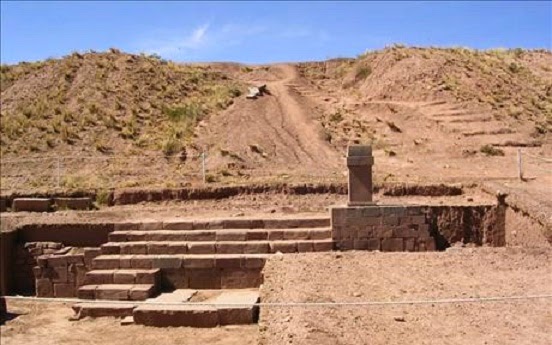Archaeologists discover an underground pyramid in Bolivia
The government of Bolivia announced it will start exploratory excavations this year at the ancient fortress of Tiahuanaco after a buried pyramid was detected.

Ludwing Cayo, director of the Tiahuanaco Archeological Research Center, told Efe that the formation is located in the area of Kantatallita, east of the Akapana pyramid.
In a presentation for the media, Cayo outlined a five-year for further research at Tiahuanaco, an archaeological site 71 kilometres (44 miles) west of La Paz that was the cradle of an ancient civilization predating the Incas.

Excavations may start soon, depending on the timing of cooperation agreements with foreign universities and institutes to enroll more forensic archaeology experts in the effort, Cayo said.
Besides the pyramid, ground-penetrating radar has detected “a number of underground anomalies” that might be monoliths, but those findings require more detailed analysis.
Tiahuanaco was the capital of a pre-Columbian empire known as Tiwanaku that left a legacy of impressive stone monuments such as Kalasasaya, the semi-underground Template, sculptures of prominent figures, the Gate of the Sun, and ruins of palaces.
Bolivian researchers say Tiahuanaco began as an agricultural village around 1580 B.C. and grew to become an imperial state by A.D. 724, but was in decline by the late 12th century.
At its peak, the Tiwanaku realm occupied over 600,000 square kilometres (231,000 square miles).
Tiahuanaco has been a United Nations Educational, Scientific, and Cultural Organization (UNESCO) World Heritage Site since 2000.

It was the capital of an empire that extended into present-day Peru and Chile, flourishing from 300 to 1000 A.D., and is believed to be one of the most important cities of ancient America. Andean legends claim the area around Lake Titicaca was the cradle of the first humans on Earth.
According to the myths, Lord Viracocha, the creator of all things, chose Tiahuanaco as the place of creation. It is unknown how old these ruins are, but some researchers suggest that they date to 14,000 years B.C.
Fox News Latino writes that at its height, the Tiwanaku realm covered 600,000 square kilometres (231,000 square miles), and “left a legacy of impressive stone monuments such as Kalasasaya, the semi-underground Template, sculptures of prominent figures, the Gate of the Sun and ruins of palaces.”
Previous excavations at the site have revealed substantial portions of the Akapana Pyramid Mound.

Archaeology’s InteractiveDig writes that in the ancient past there is evidence that the established infrastructure was razed and rebuilt by the inhabitants, and the city was abandoned.
Researchers say there was a sudden shift in 700 A.D. Previous monuments were torn down, and the blocks were used to build the Akapana Pyramid. However, by the time the city was abandoned, the project had still not been completed and laid unfinished.
